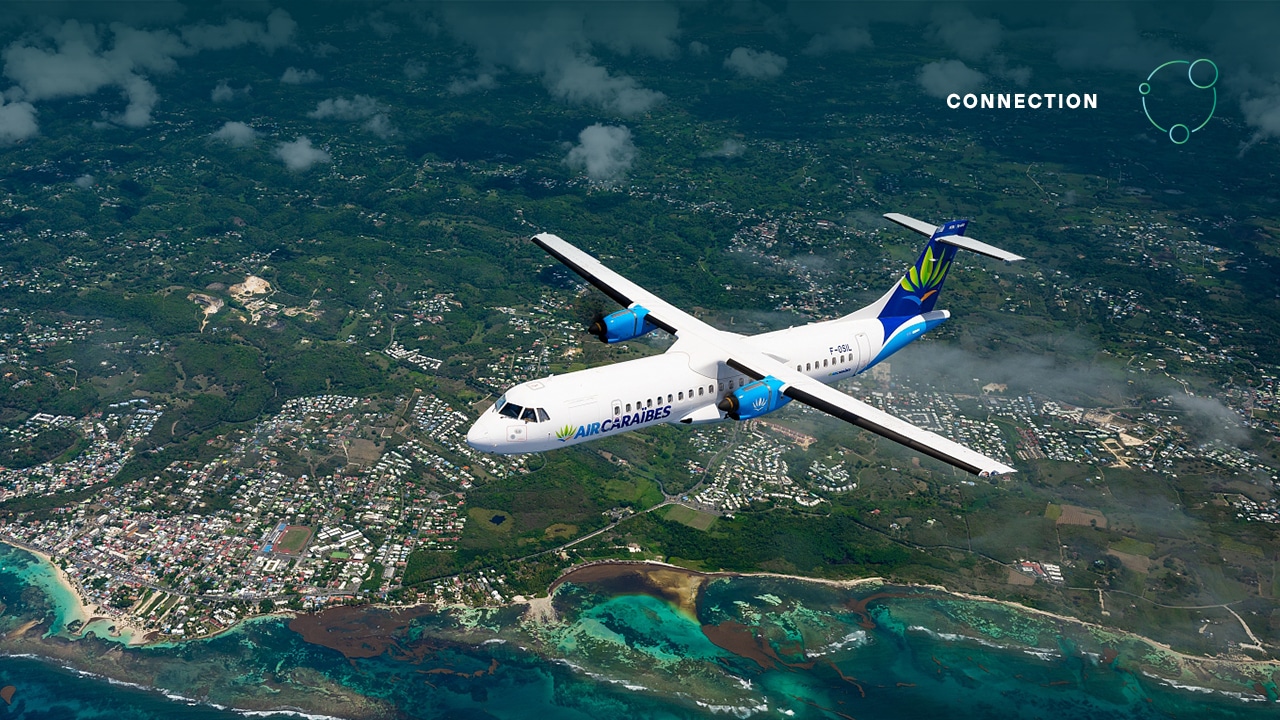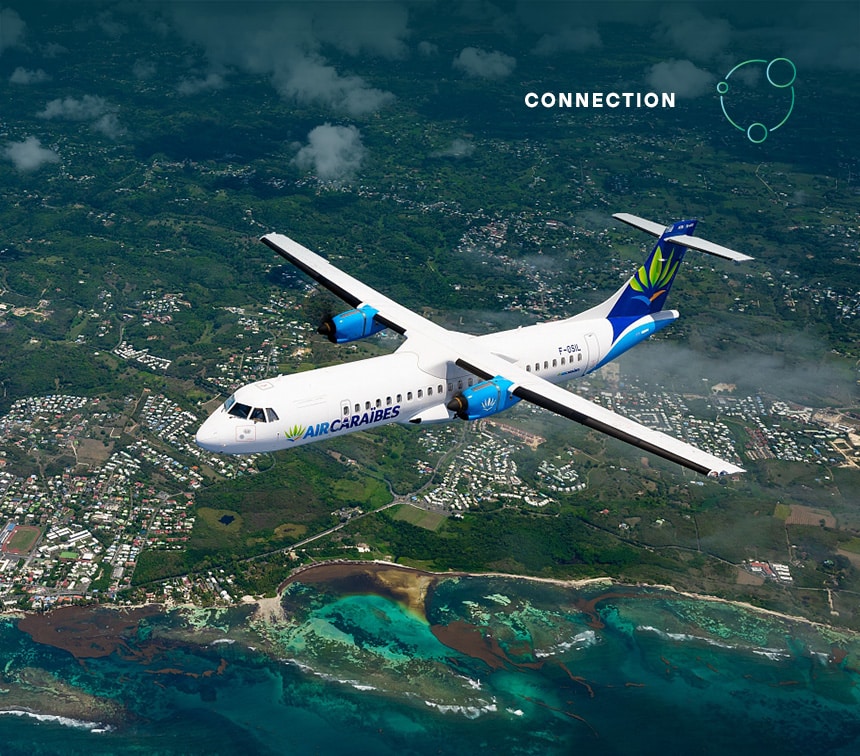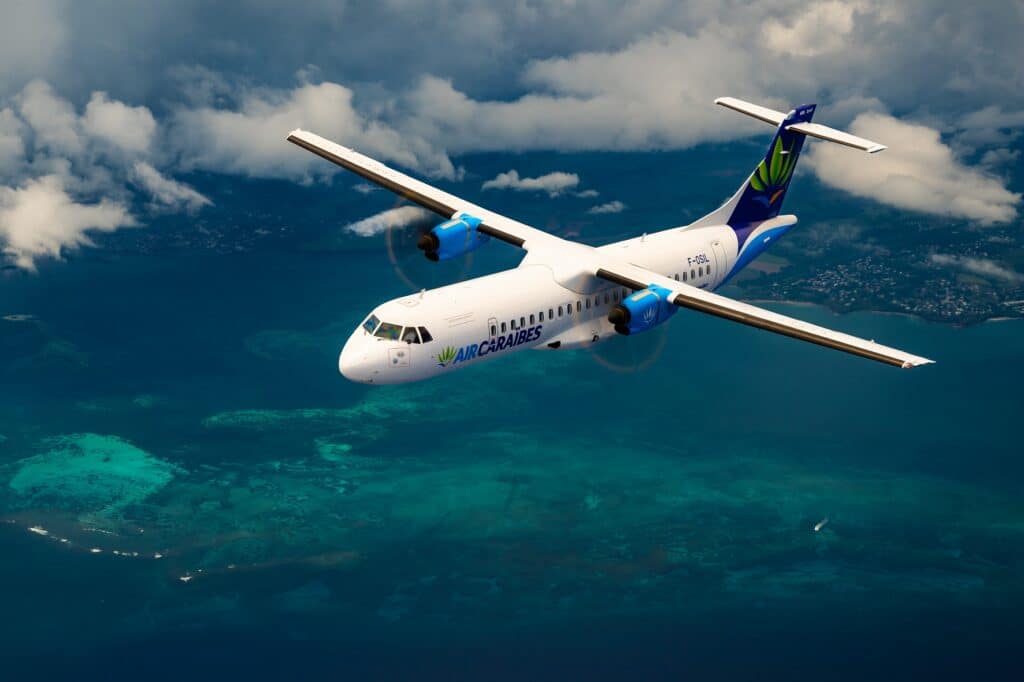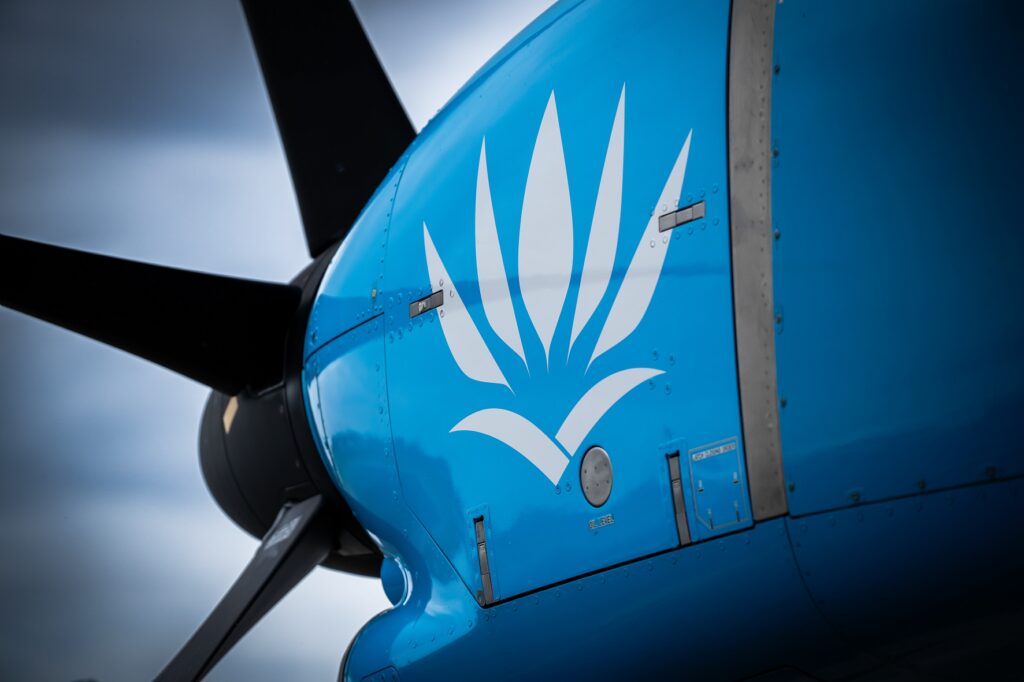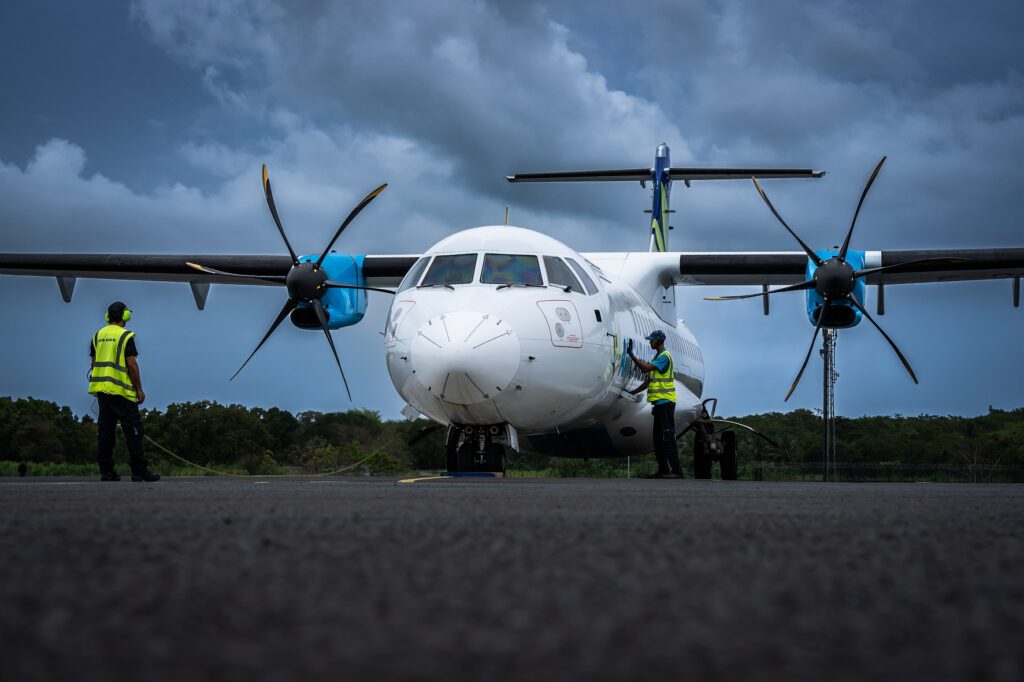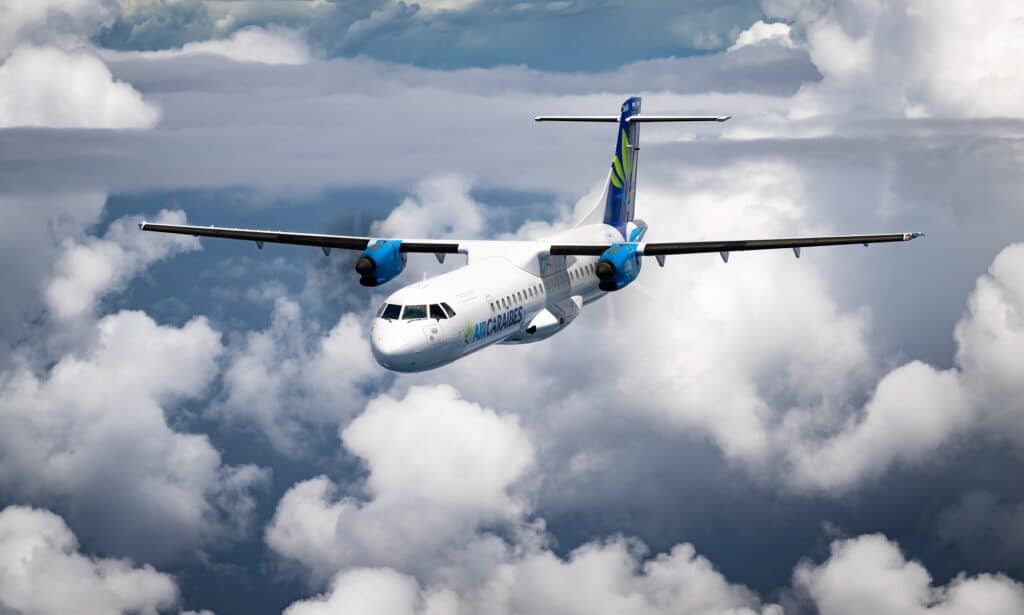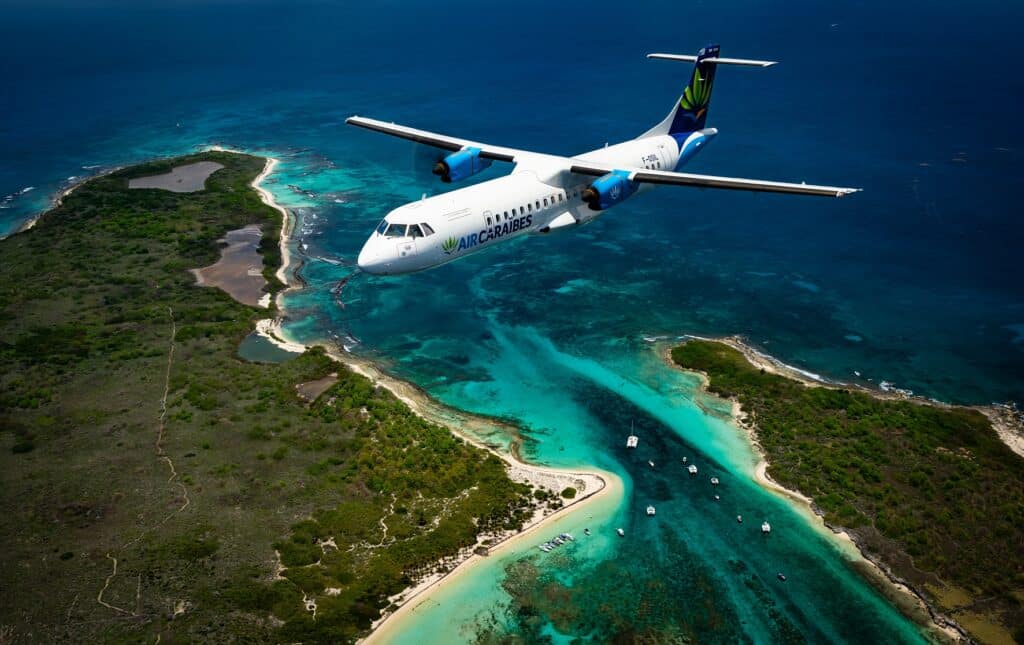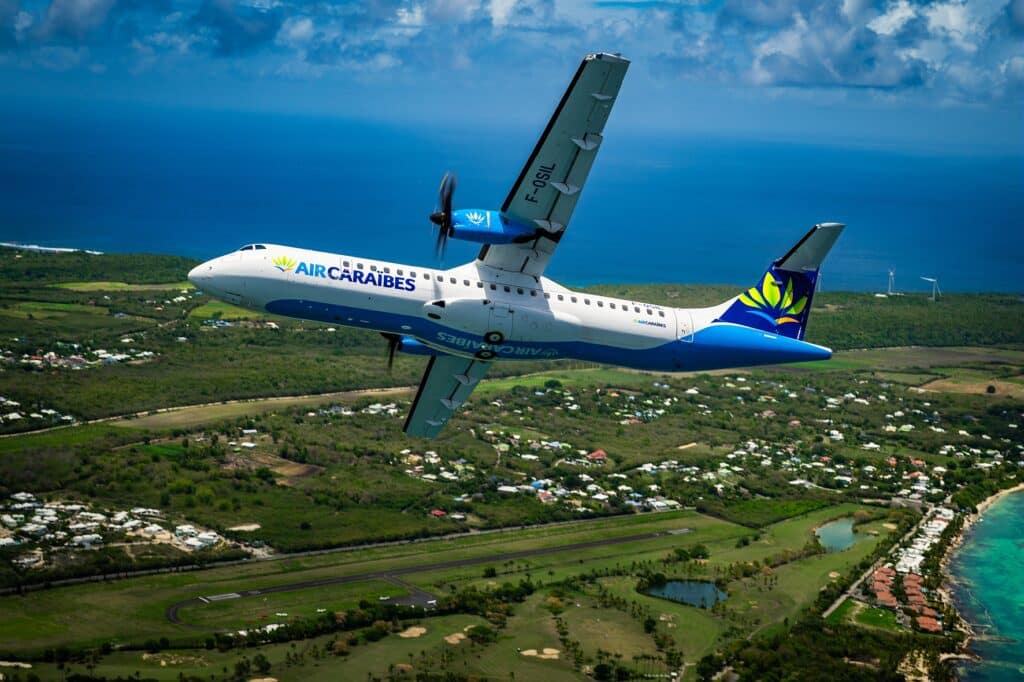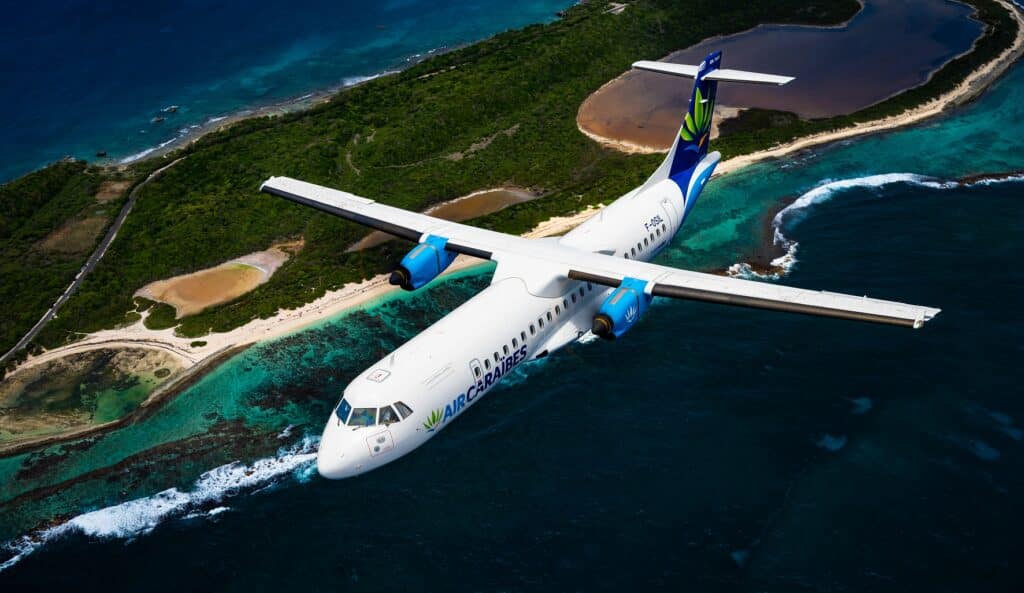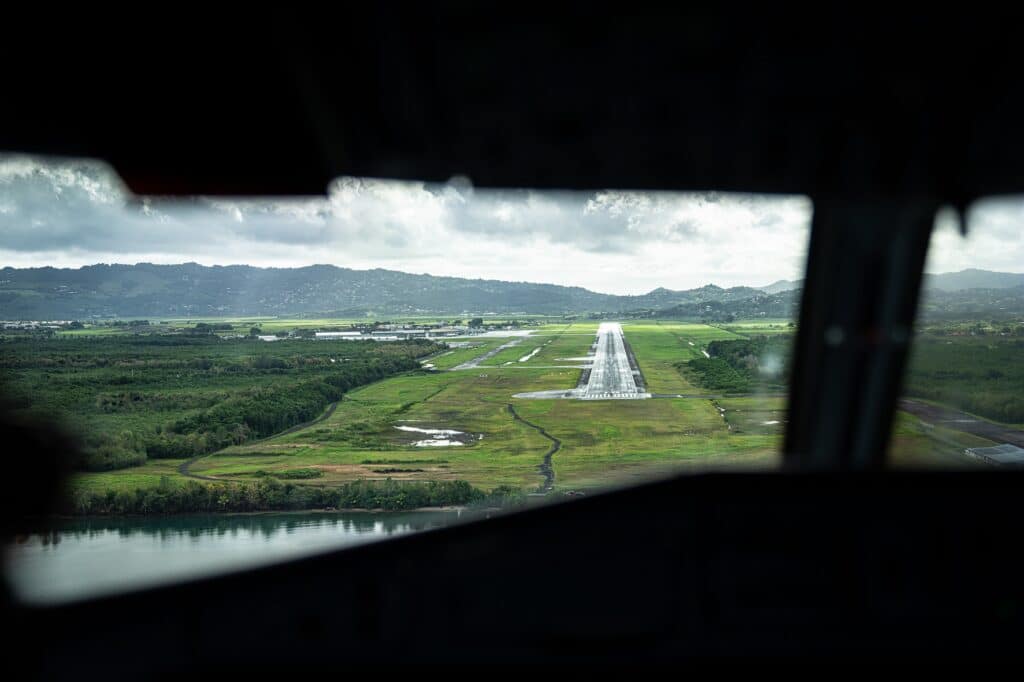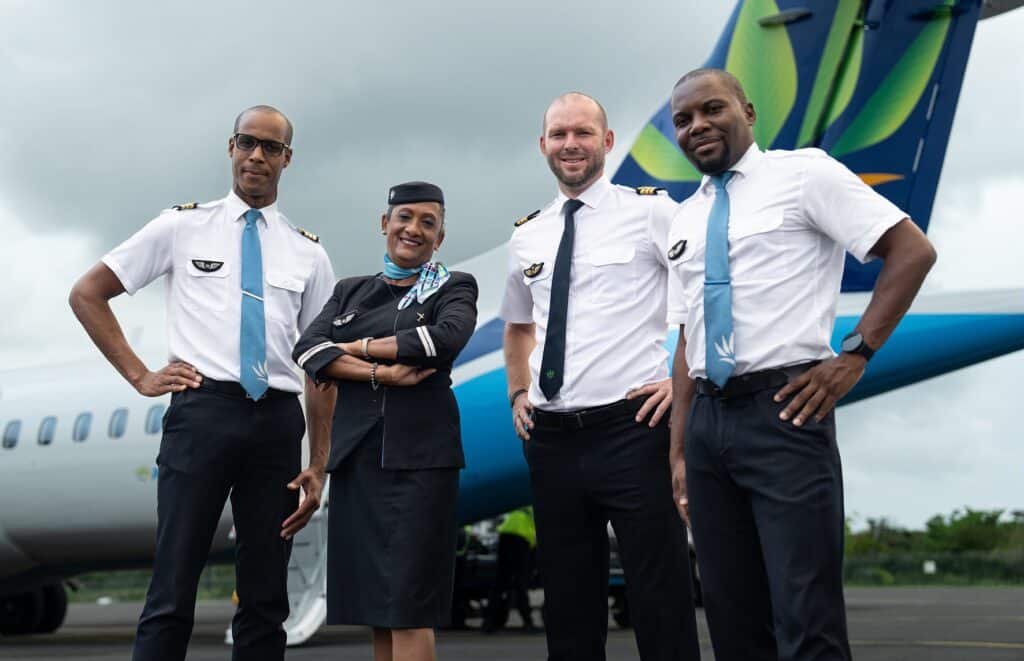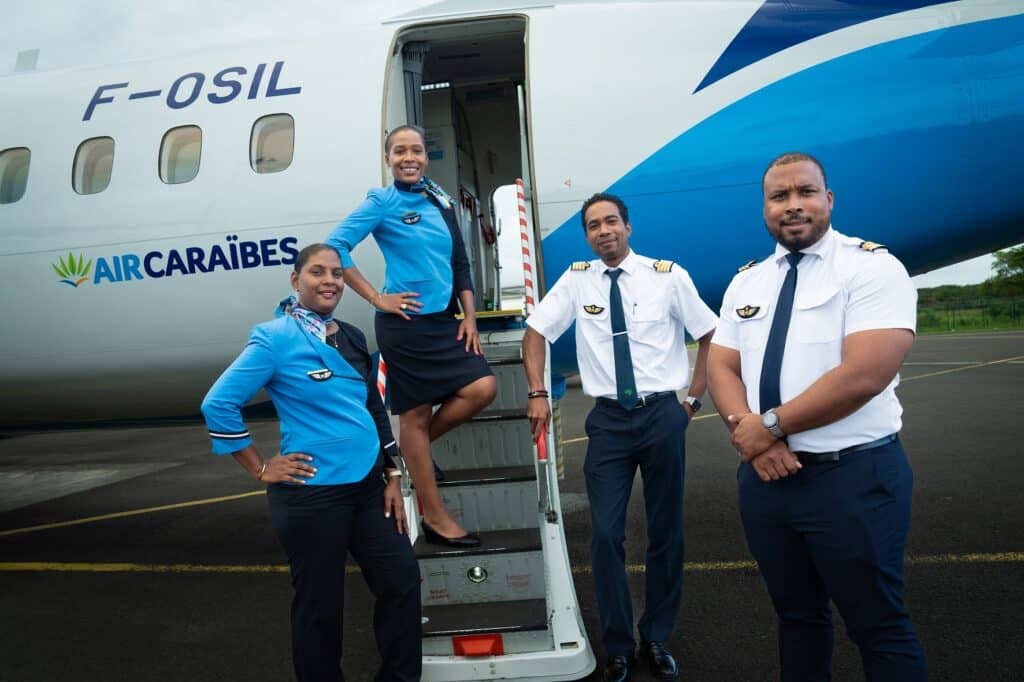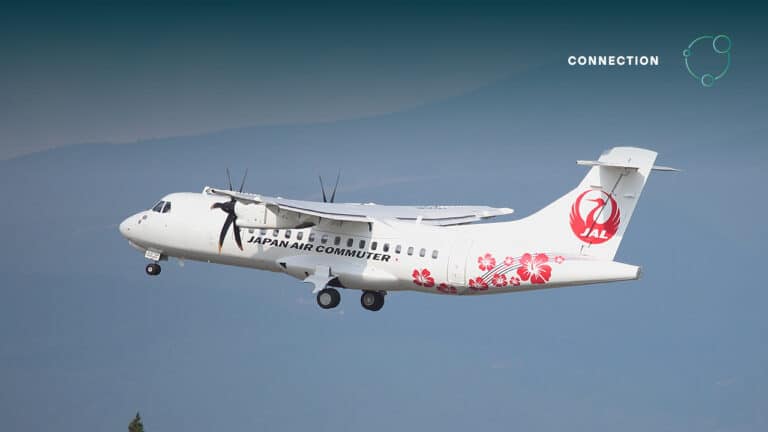Flying the Lifeline: Air Caraïbes and the Spirit of the French West Indies
In the French Caribbean, flying isn’t just about getting from A to B. It’s about keeping communities connected, cultures alive, and the rhythm of island life flowing. Discover how Air Caraïbes and its ATR fleet make this possible.
A Sky Full of Stories
To fly in the French Caribbean is to glide over turquoise waters, lush green peaks, and sun-drenched coastlines. But beyond the postcard beauty lies a deeper truth: aviation here is essential. It’s a thread that ties together the lives of people across islands separated by sea, but united in shared culture, family ties, and daily rhythms.
Air Caraïbes, with its fleet of ATR 72-600, has been weaving this thread since 2000, serving the islands of Guadeloupe, Martinique and Saint Martin. And its network provides connections to other Caribbean islands, while also linking the entire region with long-haul connections to Paris, with A350s. While this stunning video captures the visual poetry of these flights, the real story is about connection: human, geographic, and emotional.
Flying Between Islands Isn’t Like Flying Anywhere Else
Short runways. Mountainous terrain. Unpredictable aerology. These are just some of the challenges pilots face in the region. Lohann Chong-Pan, a pilot with Air Caraïbes, describes the approach into Saint Martin’s Grand Case airport as one of the most complex in the network, and one of the most beautiful.
The runway is short, the winds are tricky, and the mountains nearby demand precision, but flying here is a joy – no sunset is ever the same. “I love the flight line into Saint Martin,” says Chong-Pan. “As well as the short runway, pilots have to be aware of the mountains in near proximity, and the atmospheric conditions – the ‘aerology’ that warm air and high mountains create.”

It’s in these conditions that ATR turboprop aircraft shine.
“Using the ATR on a short-haul, and ultra-short-haul network is highly efficient,” says Eric Michel, Air Caraïbes’ Managing Director West Indies. With CO₂ emissions 45% lower than those of regional jets, ATR aircraft support Air Caraïbes in its sustainability efforts. “We have the latest ATR series, with the latest Pratt and Whitney PW127XT engines, with a fuel consumption that is really low.”
Their agility, reliability, and low environmental impact make them perfectly suited to the region’s needs – not just technically, but socially.

A Lifeline, Not a Luxury
For many islanders, flying isn’t optional. It’s the only way to maintain family ties, attend school, do business, or access healthcare. The 35-minute flight between Pointe-à-Pitre and Fort-de-France, for example, carries a mix of business travellers, tourists, and families visiting loved ones.
During Hurricane Irma, Air Caraïbes played a vital role in emergency response. Chong-Pan recalls making the last flights into Saint Martin before the cyclone hit. “A few days later, I experienced the vital importance of air transport for the population. The airlifts and humanitarian aid provided during this period by Air Caraïbes, especially with its ATRs, were essential in dealing with the disaster. It really reinforced my awareness of the crucial role of our profession.”
And while ferries do exist, they’re not a reliable alternative. Rough seas can cancel crossings for days, and travel times are long. Ferries don’t serve same-day business trips, and seasickness is common. In contrast, aircraft are the first to resume service after storms, making them essential for urgent travel and continuity.
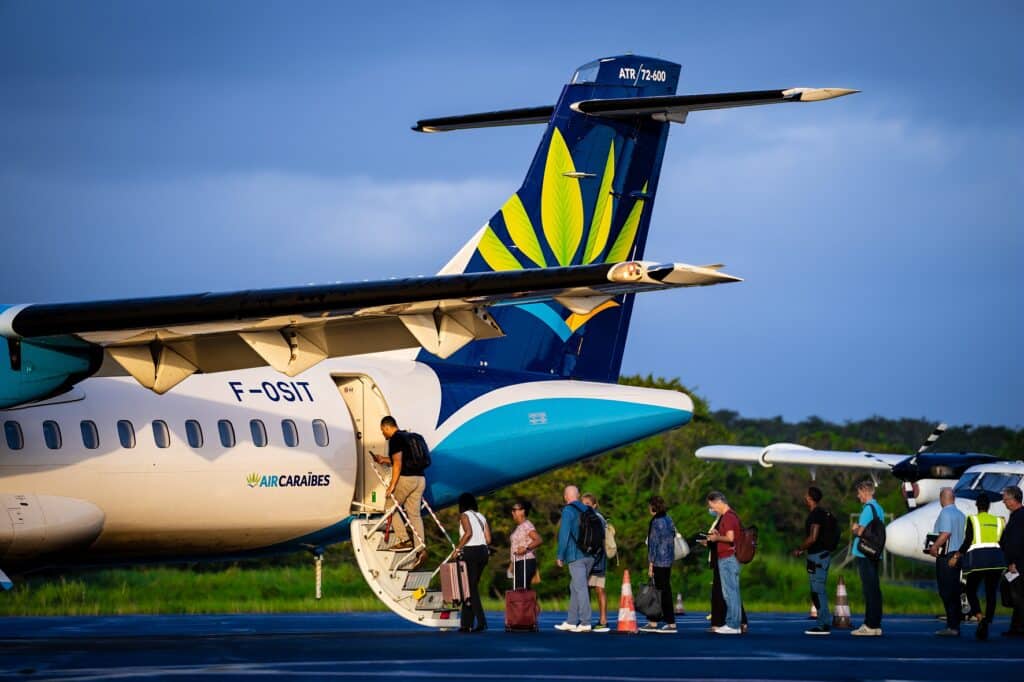
Beyond Borders: Code-Share Connections
Air Caraïbes transports around 385,000 passengers annually on its regional ATR network, and 1.6 million across its full transatlantic and Caribbean operations. These numbers reflect not just demand, but the essential nature of air travel in the region.
And while the airline isn’t looking to expand its regional footprint, it’s strengthening it through partnerships. Code-share agreements with airlines like Caribbean Airlines allow passengers to move freely across the region, even when demand is modest.
These connections support regional mobility and cultural exchange, especially among younger travellers attending festivals or language immersion programmes. They also help bring Caribbean passengers into the French network, despite challenges like visa requirements and language barriers.
The Caribbean Way of Life, in the Air
More than a journey, flying with Air Caraïbes is an experience steeped in Caribbean warmth and resilience. When you step on board an Air Caraïbes flight, your fellow passengers – and their reasons for travel – will be as diverse as you can imagine. French-speaking students might be travelling to Anglophone islands, like Trinidad, to pick up language skills. And vice versa. Grandmothers visiting family in Martinique, or tourists discovering the islands for the first time, the ATR flights are part of the story.
“The airplane is a fundamental means of transport for us islanders. Without it, we simply cannot leave or return to Martinique,” says Celia Sainville from the Habitation Clément, a distillery based on an old plantation in the south-east of Martinique, and a top tourist attraction as well as arts and heritage centre. As the owner of a business which is itself reliant on a steady flow of tourists, Sainville highlights the central role of air transport on her island and beyond. “It’s what brings visitors to discover our destination, to explore everything we have to offer: our culture, our people, and the places shaped by those who live here.”








